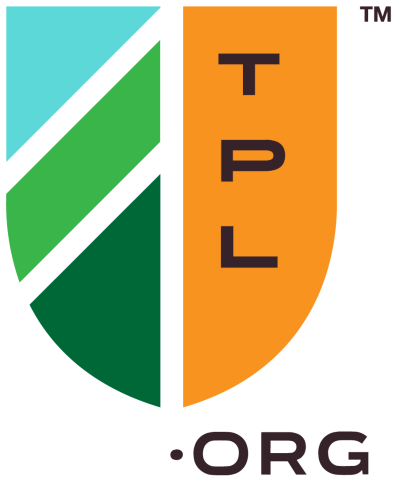Why was the National Conservation Easement Database (NCED) built?
In 2009, no single, nationwide system existed for sharing and managing information about conservation easements. We built this national database and web site to help agencies, land trusts, and other organizations plan more strategically, identify opportunities for collaboration, advance public accountability, and raise the profile of what’s happening on-the-ground in the name of conservation.
Who is involved in this effort and who supports this effort?
NCED is an initiative of the U.S. Endowment of Forestry and Communities, and is managed by Ducks Unlimited and The Trust for Public Land. Founding partners also include the Conservation Biology Institute, NatureServe, and Defenders of Wildlife. These groups have extensive local and regional experience with conservation easements and database management, and expertise developing user-friendly web sites to access information.
NCED is financially supported by grants from public and private sources, A list of funders can be found here.
The Land Trust Alliance, which represents the views and concerns of the nation’s nearly 1700 local and regional land trusts, is also a sponsor of the NCED and collaborates with the NCED team on communications and baseline information.
What data are collected and how?
The NCED database includes basic information on the conservation easements (who holds the easements, date of easement acquisition, purpose, etc.) and the location. A full list of collected attributes can be found on the downloads page. Currently, The Trust for Public Land is responsible for collecting information on publicly held easements and Ducks Unlimited is responsible for collecting information on privately held easements. This document describes how land trusts and other non-profits can submit their information.
If an agency or organization has fee title data that they would like to share along with the easement data, the data collector for the National Conservation Easement Database project can collect that information and pass it on to the USGS Protected Areas Database (PAD-US) Coordinator. PAD-US is the official national inventory of public parks and protected lands in the United States. You can read more about PAD-US at www.protectedlands.net.
How is private information handled?
The National Conservation Easement Database (NCED) does not contain any identifying information about landowners. Only publicly available information from land records and basic statistics are included, such as the easement boundary, conservation purpose and easement holder. For special instances in which a land trust requests concealing the exact location of an easement, we will not display the location on the map and will withhold the location from downloads. For these easements, all other descriptive information is available on the website in the easement searches, in state or easement holder profiles, or as a tabular download along with information on all the other easements. To illustrate, if there are five easements in a county and two of these easements have requested privacy, only the three non-sensitive easements are shown on the map, while the state and easement holder profiles will summarize relevant statistics for all five easements.
How is this effort related to other national protected areas mapping efforts, such as the Protected Area Database of the U.S. (PAD-US)?
The National Conservation Easement Database (NCED) contributes to America’s official inventory of protected areas, the Protected Areas Database of the U.S. (PAD-US) managed by USGS. See http://gapanalysis.usgs.gov/padus/ and www.protectedlands.net. PAD-US is an inventory of public and non-profit fee-owned lands and management designations (e.g. Wilderness). The NCED is using compatible technology and coordinates with USGS regarding data standards to ensure that both data sets can be used in creating a complete GIS-based overview of protected areas. Sensitive easement information will not be shared with or displayed on PAD-US.
Since the projects are related and include some of the same players, if an agency or organization has fee title data that they would like to share along with the easement data, the data collector for the National Conservation Easement Database project can collect that data and pass it on to the PAD-US Coordinator.
Why should I share my easement data / What’s the benefit?
Knowing where lands are leads to better conservation decisions. This is vital to ensure public trust and continued conservation funding.
Sharing data will advance land conservation by leading to a greater understanding of conservation success on-the-ground, helping to identify gaps and needs, advancing public accountability about conservation easements, and improving efficiency in planning and collaborating with other groups. Read more about the key benefits of contributing data to NCED.
Am I required to share my data?
No, this is a voluntary effort.
Will I have an opportunity to review the data before they are made public?
Upon request, data providers can review their data after it has been collected and checked for consistency.
Will my data be changed or edited?
We do not change or edit polygon geometry. Polygons that overlap will be flagged as “Conflict Not Adjusted” or “Stacked”. (Stacked simply means that multiple easements legally overlap the same area.) It is the data providers’ responsibility to fix geometric errors in their original datasets and share updated geometry or attributes with the NCED team when available.
If necessary, the NCED team will edit and format attributes to fit the NCED schema. Some attributes (such as the GAP code) may be given a default value if no value is collected from the data provider. You can find a list of NCED attributes here.
In some cases, we may contact the data provider to resolve major geometry conflicts, information gaps, or potential errors.
How much time will it take for me to participate?
This won’t take too much of your time. You’ll need to prepare the data requested from the data collector in your state and, if you so desire, you can also take some time to review your non-sensitive data before it is published. If you have limited resources, our team can help aggregate and/or digitize your data.
How can I access the data and who has access to the data?
Users of several public web sites can view, analyze, and download data. The main access point for the easement data – www.conservationeasement.us – allows public users to view non-sensitive easements on a map and access accompanying information, while also providing the interactive ability to search and create reports. Additional websites, including LandScope America, Conservation Registry, Protected Areas Database of the U.S. (PAD-US CBI Edition), Data Basin, and the Conservation and Recreation Lands system, include the non-sensitive easement data, letting users view information about easements in context with information about biodiversity and other natural resources. Partners have direct access to the easement database for internal analyses that support decisions in the course of their respective conservation missions. Any published reports or other documents that rely on internal analyses will not include information on any sensitive easement locations.
Is this database subject to a Freedom of Information Act request?
No, a Freedom of Information Act (FOIA) request would not apply because this is not a project controlled by the federal (or state) government.
Does the NCED track the funding for conservation easements?
No, the NCED does not track any funding-related information for easements. However, The Trust for Public Land’s Conservation Almanac does track the amount of public funding spent and acres acquired for land conservation, including easements.
How accurate is the database?
The NCED is an aggregate of databases, so the spatial accuracy of each record will vary depending on the spatial accuracy of the original data. As a result, this database should not be used for legal boundary disputes.
We do take several steps to find and fix inaccuracies. After a dataset is collected, it goes through a quality control process. Geometry validation helps to ensure there are consistent boundaries. Attribute validation checks for errors in the attribute table. The NCED team will work with the data provider to fix gross inaccuracies. Minor overlaps and conflicts are flagged in the database, while omissions in the attribute table are either coded using a default value or a null value.
Upon request, data providers can review their data before it is published, giving the data another check for accuracy.
Where are my data stored?
Data are stored in a database hosted by The Trust for Public Land. Only non-sensitive information will be transferred to public web sites for publication.
How can I give feedback on the data?
Upon request, data providers are given an opportunity to review their data before it’s published and can provide feedback at that time. You can also contact the NCED team through our feedback form here.
How are data or information being updated over time?
The National Conservation Easement Database partners keep in touch with a network of land trusts and agencies who provide new and updated data over time. As data are updated and validated, it is published on the National Conservation Easement Portal, as well as the other web sites consuming the information.
What if my organization does not currently have GIS capacity and/or does not have any easements in a digitized form?
If an agency or land trust’s data is not currently digitized, it will be noted in the tracking database and the responsible data collector will follow-up with the agency or land trust to work out a process for getting their data digitized.
Can this project help fund the digitizing of easement boundaries?
Depending on how we fund the National Conservation Easement Database (NCED) in the future, we may be able to support efforts to computerize existing paper and other records.
Does NCED protect my conservation easement from having a power line sited through it?
Not exactly. NCED will help conservationists urge protection of easements from government-backed land uses like power lines by making government planners aware of where easements are. By showing where easements are, NCED helps people urge planners to avoid easements. Power lines are one such concern because the U.S. Congress has enacted and is considering additional energy policies to build more high-voltage transmission power lines across America. In deciding where exactly these lines will run, the various responsible governing bodies must find paths through or around existing land uses. Protected lands may appeal to the planners if these lands appear to be open and available – which could happen if a conservation easement is in place that no one knows about. NCED can help by displaying easements so planners will consider avoiding them. There is no legal guarantee that lands under easement can be protected from inclusion in a power line; however, NCED enables easement holders to make themselves known and advocate to steer the power line elsewhere. You can learn more about the power line issue at:
http://www.landtrustalliance.org/policy/emerging-issues/energy-development


